It may not be as well-known as nearby Fes, but Meknes is still a worthy addition to any Moroccan bucket list. Located near the Middle Atlas Mountains in northern Morocco and nicknamed the ‘Imperial City,’ Meknes boasts a fascinating centuries-old past with a vibrant city packed full of bustling souks, mosques, and madrasas, thousand-year-old Roman ruins and other historic tourist attractions.
Meknes offers a pleasing mix of the old and new, split between the ancient medina with its authentic riads and the new Ville Nouvelle with its spacious properties and modern cars. It doesn’t matter where you go in this city, you’ll find there is always plenty of things to do in Meknes.
10. Dar Jamaï Museum
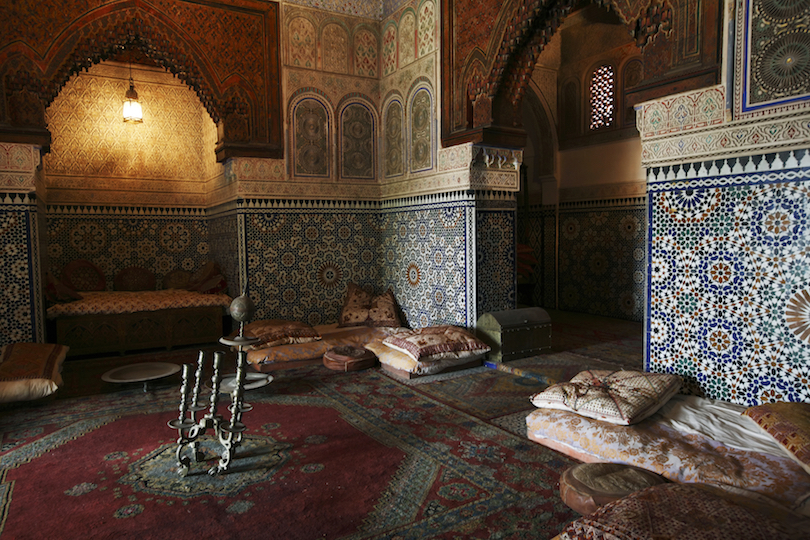
Built in 1882 as the stately home of the Jamaï family, Dar Jamaï Museum served as a military hospital and court in 1912. But since 1920, it’s housed a striking display of 14th-century ceramics, jewelry, textiles, traditional costumes, and impressive cedar wood crafts.
The museum also features the personal belongings of Sultan Moulay Ismail, the second ruler of the Alaouite Dynasty – known infamously as ‘the Warrior King.’ Items include his period clothing, a cookery set, and a traditional sauna.
It may be over a century old, but the Dar Jamaï Museum still boasts most of its original features, including painted windows, wood carvings, Moroccan mosaics, and an Andalusian garden with cypress trees and fountains.
9. Mausoleum of Moulay Ismail
The Mausoleum of Moulay Ismail is the final resting place of Morocco’s Warrior King. Built during his reign in the 18th-century, the location was chosen by the sultan himself because it once contained the city’s courthouse, and he wished to be judged by his own people.
Granted, the mausoleum doesn’t look like much from the outside; in fact, many visitors don’t even notice it. But step inside, and you’ll be enthralled by the several interconnected courtyards with their elaborate mosaics, marble columns, carved plasterwork, and tinkling fountain.
The Mausoleum of Moulay Ismail is one of the only landmarks of its kind in Morocco open to non-Muslims, with the exception of the tomb itself. It’s said that visiting the mausoleum will bring good luck.
8. Sahrij Swani
Sahrij Swani, which means ‘Basin of the Norias,’ is a giant lake in the city of Meknes. Built by Moulay Ismail during the 17th-century, it was once believed it was constructed purely for entertainment purposes. Later accounts suggest it was more likely intended as a reliable water source for the city.
The lake was filled from ten wells dug near the Sahrij and from the Wadi Bufekrane, which runs down from the Middle Atlas Mountains. Today, however, only the ruined foundations remain – the result of an 18th-century earthquake.
Other highlights include the Royal Stables and a bronze statue of a man holding a water jug (which has since been stolen). Today, the lake is a popular hangout for swimming and boating, particularly in the summer months.
7. Volubilis
Volubilis is one of the best-preserved Roman ruins in Morocco. These crumbling ruins can be found about an hour from Meknes and offer an impressive display of columns, mosaics, and abandoned buildings.
Founded in the 3rd-century BC, Volubilis was once the capital of the Kingdom of Mauretania. Taken over by local tribes around 285, it was never reclaimed by the Romans because of its exposed and remote location. Instead, it served as the seat of Idris ibn Abdallah in the 8th-century before being abandoned in the 11th-century.
Volubilis remained mostly intact until an earthquake brought it to ruins in the mid-18th-century. As excavations and restorations began in the 19th-century, today, much of the capital’s history can be discovered. Landmarks include a basilica, triumphal arch, a series of bathhouses, and an ancient aqueduct. But it’s the mosaic-floored townhouses that are the real highlight here – particularly the House of Orpheus.
6. Moulay Idriss Zerhoun
Spread across two scenic hilltops, Moulay Idriss Zerhoun is a famous pilgrimage site for Islamic followers. This attractive town was built on the slopes of Mount Zerhoun in the 8th-century by Moulay Idriss I, who founded Morocco’s first dynasty.
Moulay Idriss Zerhoun is a sacred place for Muslims, and the town itself with its narrow streets is worth a wander. There’s the Mausoleum of Idriss I (no entry for non-Muslims) and another mosque that boasts the only round minaret in Morocco. Visitors come here to enjoy the incredible views of the ruined city of Volubilis and the Saiss Valley, as well as to hike the olive-grove-dotted countryside.
5. Royal Stables
One of Meknes’ most impressive historical landmarks, the Royal Stables is an absolute must-see. Built by Moulay Ismail to house his 12,000 royal horses, its architecture is truly remarkable. You may recognize it from the Jewel of the Nile and Ishtar movies.
The building itself was designed with the horses’ wellbeing in mind, mainly to keep them warm in winter and cool in summer. A clever system of water chambers fed by a canal kept them well-watered. Each horse had a dedicated groom and slave, and an enormous granary – Heri Es-Souani – was erected next door to store their food – so big that it could store enough grain for 20 years!
Visitors can explore this amazing dedication to Moulay Ismail’s horses. As the 1755 Lisbon earthquake left them mostly in ruins, they’re believed to have been seven times the size in their heyday.
4. Bou Inania Medersa
The Bou Inania Madrasa is an Islamic learning center opposite the Grande Mosquée in Meknes. Founded by Abu al-Hasan Ali ibn Othman in 1341, it was built as a theological college and a congregational mosque.
While the Bou Inania Madrasa is somewhat overshadowed by the madrasa of the same name in Fes, it remains one of the best examples of Merinid architecture in Morocco. It boasts some spectacular zellige tiles, geometric-patterned stucco, and carved cedar wood ceilings.
Tourists (even non-Muslims) can explore the student rooms, the school’s hammam, and enjoy the rooftop views of the Grande Mosquée minaret.
3. El Hedim Square
El Hedim Square, also known as Place El Hedim, is a famous square that forms the heart of the Meknes medina. It was built between 1672 and 1674 by Moulay Ismail, who demolished a large part of the old city for this square and his palace, marked by the glamorous Mansour Gate.
Historically, the square was used for public executions, royal announcements, and as a storage area. Today, it’s the perfect spot for people-watching. It gets very busy at night when the locals come together to enjoy a leisurely stroll, have a meal at one of the cafes, play football, and listen to musicians and Arabic storytellers.
2. Bab Mansour Gate
Meknes has over 20 gates surrounding its medina, but Bab Mansour Gate is the most iconic. A striking example of Almohad architecture, the gate is carved with Arabic calligraphy that translates to ‘I am the most beautiful gate in Morocco. I’m like the moon in the sky. Property and wealth are written on my front.’
And beautiful Bab Mansour certainly is. The last important monument to be built during Sultan Moulay Ismail’s reign, who had it built as a homage to himself, it’s covered in white and green zellige tiles and carved with Koranic panels. With an aim to remove all evidence of the dynasty before him, the gate was built with materials stolen from other Moroccan monuments (the two marble columns came from the ruins of Volubilis while the two Corinthian columns once stood in Marrakech’s El Badi Palace).
Bab Mansour Gate was designed by Mansour Laalej, a Christian-Islam converted architect, and it was partly named after him (Mansour means ‘victorious’ in Arabic). While this wooden gate isn’t actually in use today, visitors can use a smaller side door to enter the medina.
1. Meknes Medina
You can’t miss the narrow and gloriously traffic-free streets of the ancient Meknes medina. It’s filled with 17th-century gates, mosques, colorful buildings, an abundance of souks with everything from spices to clothing, and historical landmarks portraying impressive Islamic architecture.
In fact, many of the must-see historical landmarks listed above can be found within the labyrinthine streets of the Meknes medina. Admire the architecture of the Bab Mansour gate, explore the Bou Inania Madrasa, and discover the tranquil courtyards of the Mausoleum of Moulay Ismail.
Visit the Royal Stables with its enormous adjacent granary, admire the local arts and crafts at the Museum of Moroccan Art, and soak up the charming hubbub of El Hedim Square. But best of all, the medina is perfect for people-watching! So, find a rooftop café, pour yourself a steaming cup of Moroccan mint tea, and enjoy the show.
Best Time to Visit Meknes
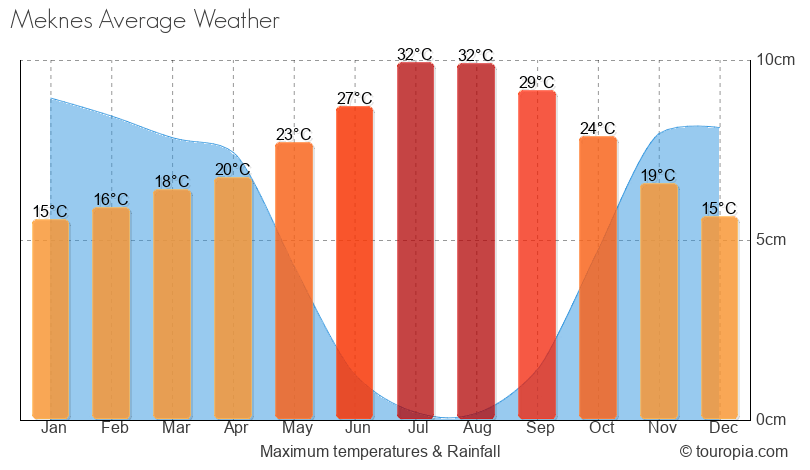
While spring and autumn are usually considered to be the best times to visit Meknes, plenty of people head here in both August and December for the school holidays. Prices are higher during these periods as the roads and restaurants are packed.
After the cooler, wet months of winter, huge crowds flock to Meknes in April and May as the weather warms up. Average temperatures of 20 to 24°C (68 to 75°F) are perfect for strolling about the center or taking trips to the Roman ruins of Volubilis. If Ramadan falls around this time, the medina is quieter during the day and livelier in the evening with huge celebrations taking place for Eid.
Due to the holidays, July and August are also popular times to visit though averages of 32°C (89°F) are a bit hot, especially at its exposed ruins. The massive Moussem of Moulay Idriss II Festival also draws vast numbers of religious revelers to the city.
September and October are also brilliant months to go as the weather is slightly cooler and the prices are cheaper. Many visit though during Eid or for its colourful Fantasia Festival.
Finally, December sees loads of people visit during the Christmas holidays, escaping the cold European winters.

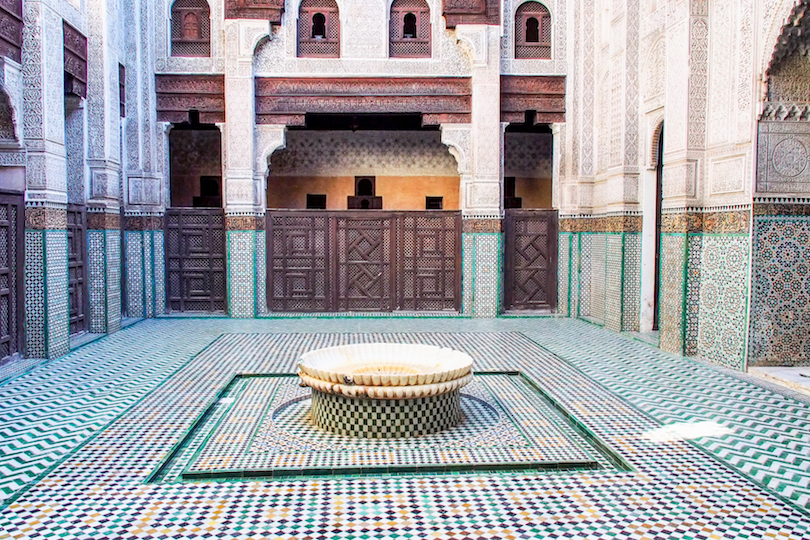
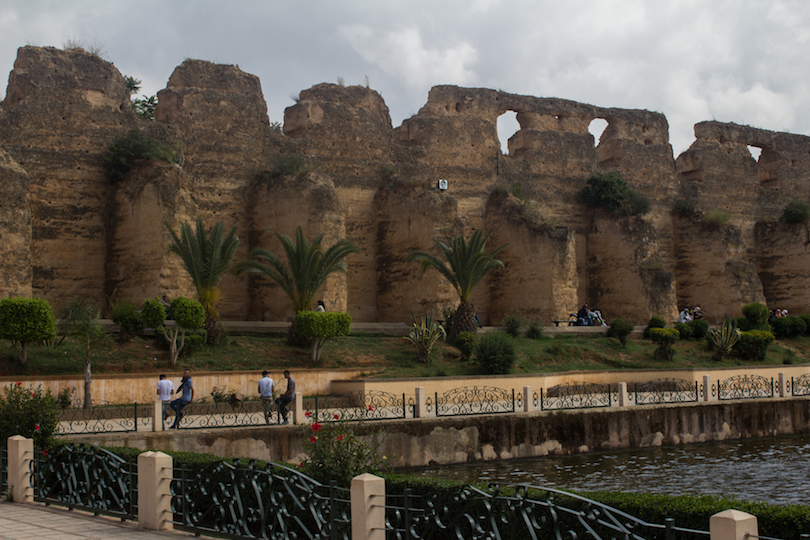
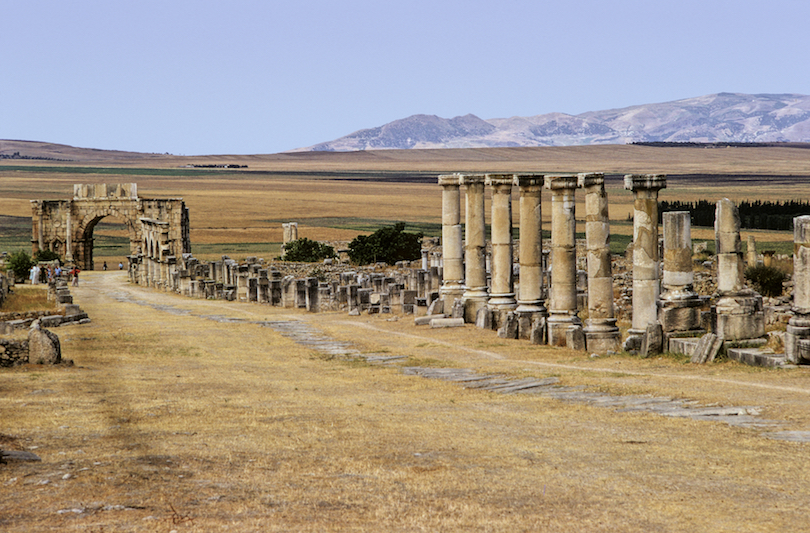
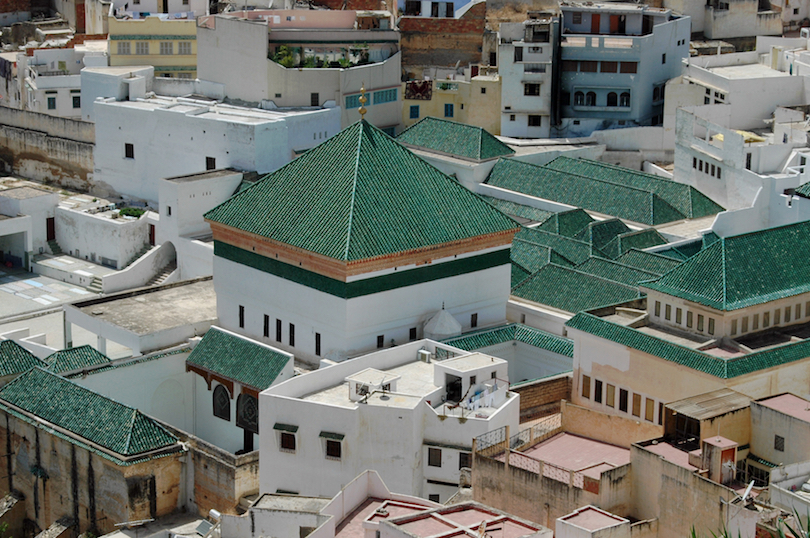
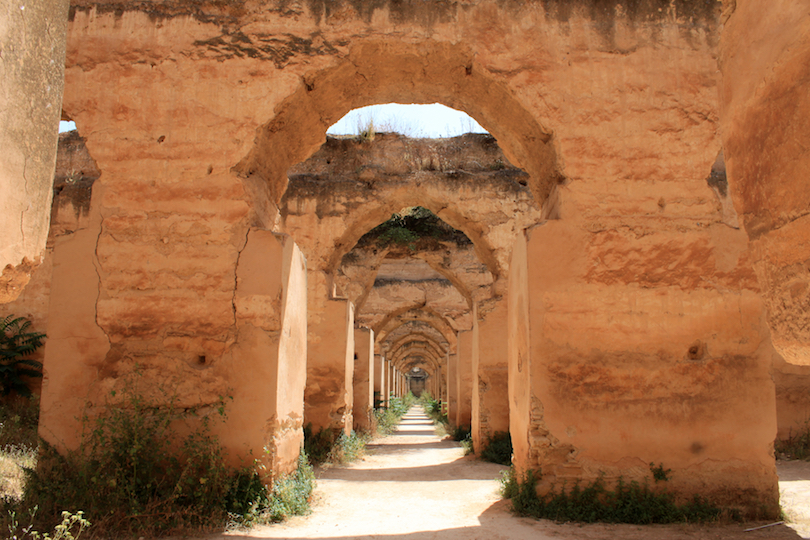
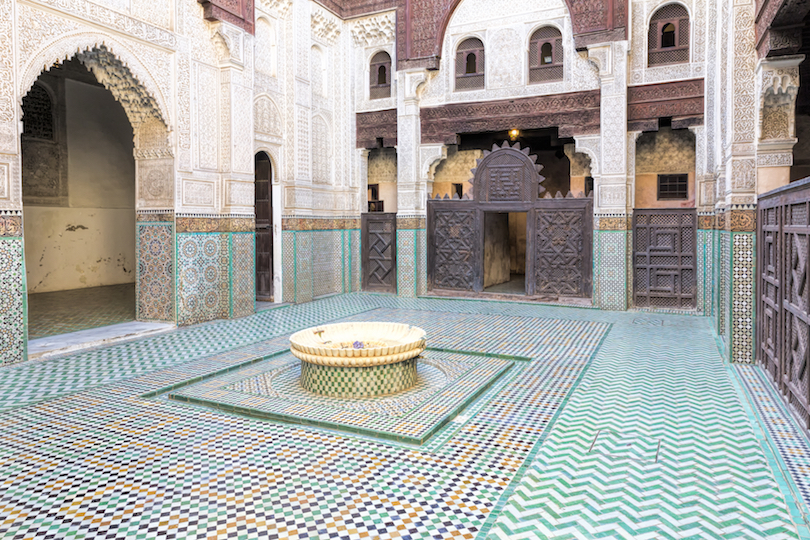
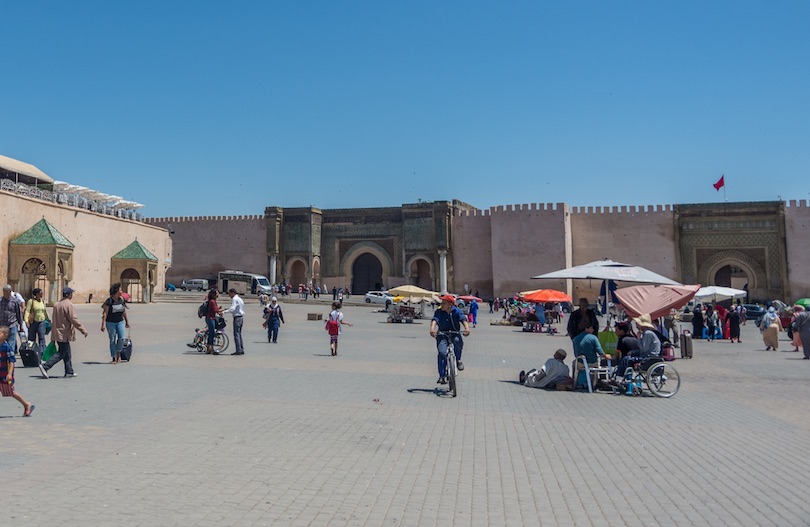
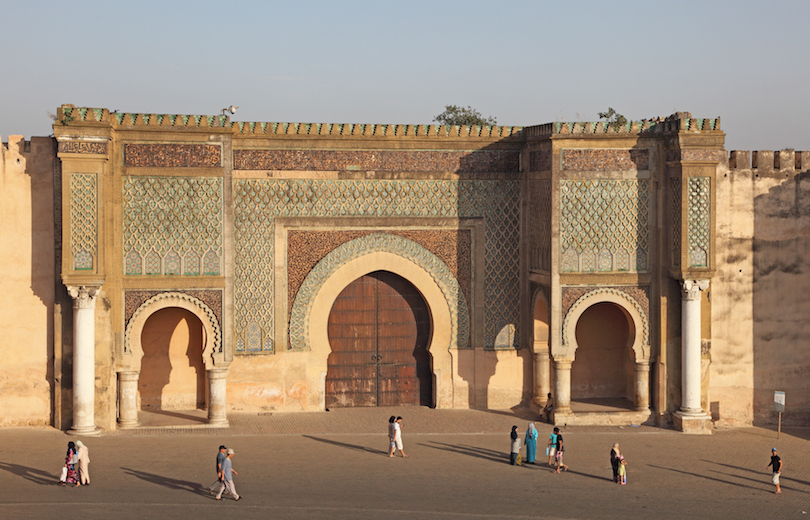
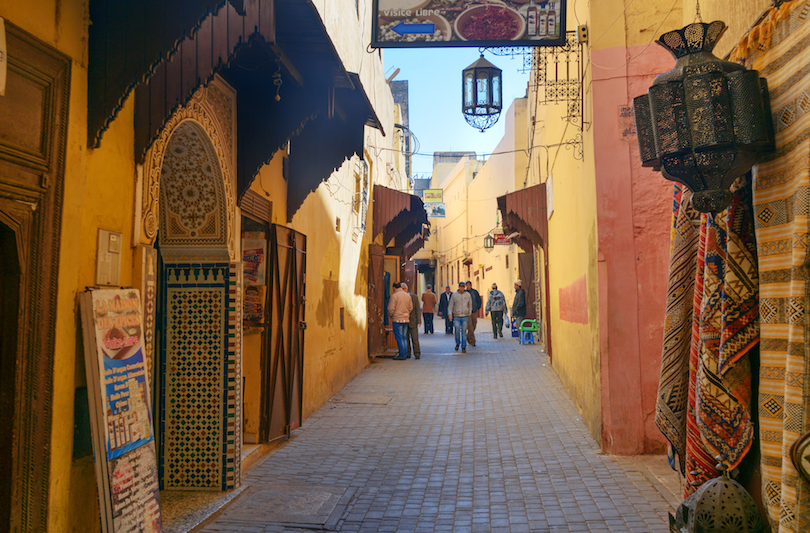
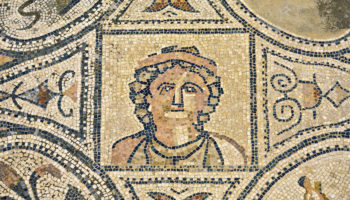

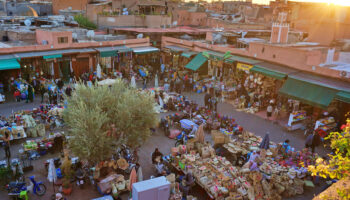
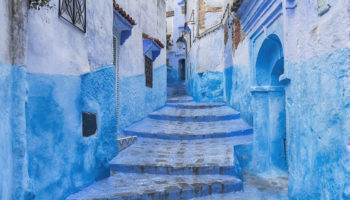
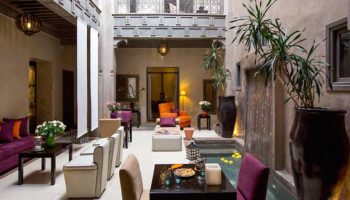

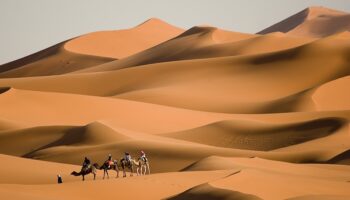
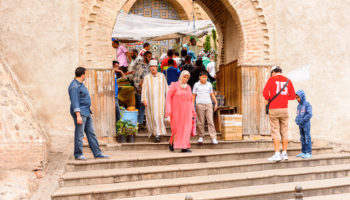
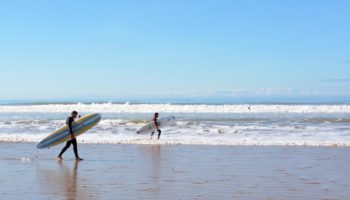
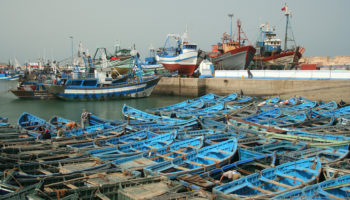
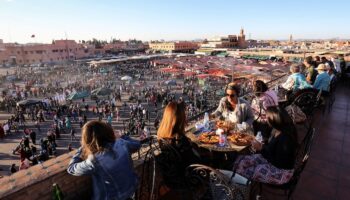
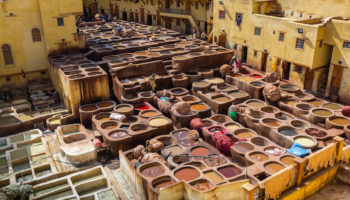
If you come to Morocco, please don’t patronize luxury establishments. If in the country, farmers probably lost their communal grazing lands to this development and most workers are probably paid minimum wage. Try to go to locally owned restaurants, rent from locals on AirBnB or tripadvisor. Go to a weekly souq. See the real Morocco.